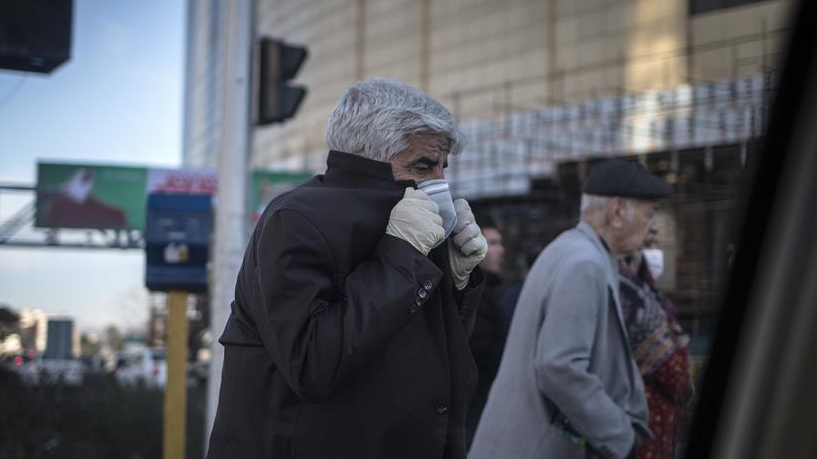
Editor's note: Jonathan Arnott is a former member of the European Parliament. The article reflects the author's opinions, and not necessarily the views of CGTN.
Whenever the name of Donald Trump is mentioned, it seems to provoke an emotional reaction. Love him or hate him, the battle lines have been drawn for years. It's become somewhat unfashionable to take a more nuanced approach, considering every issue on a case-by-case basis depending on its merits.
The President of the United States of America has a "hunch" about the COVID-19. He believes that the actual mortality rate is substantially lower than the World Health Organization's estimate of 3.4 percent. Media across the world has given him a hard time over the comments, perhaps unsurprisingly when a President determines that he knows better than the medical experts. I'm not so bothered by President Trump's bold claim, but by what it actually implies: a complete mishandling of the virus by the United States.
Behind Donald Trump's choice of words, the meaning is a reasonably valid hypothesis which numerous researchers have suggested: some cases are either asymptomatic or so mild that they go undetected within the wider population. Some people with relatively mild symptoms might even self-isolate without informing the medical profession, for fear of being placed in quarantine.
As a consequence, it's likely that more people are infected than we're currently aware of – and therefore, the number of deaths represents a lower proportion of the total overall number of cases. Trump's view isn't entirely dissimilar to that of the UK's Chief Medical Officer, Professor Whitty, who said he had a "reasonably high degree of confidence" that 1 percent is at the "upper limit" of the death rate for COVID-19.
It's particularly difficult to quantify Donald Trump's "hunch" against the available data. It's a guess, after all, and neither government nor science should operate based upon guesses when dealing with something so serious as the COVID-19.
Let's suppose though, for the purposes of this article, that Donald Trump's guess happens to be correct. It's certainly within the realms of possibility, after all. A wild assertion, perhaps, but that doesn't make it automatically wrong.

A man wears a mask as he travels in Tehran, Iran, March 2, 2020. /Xinhua
A man wears a mask as he travels in Tehran, Iran, March 2, 2020. /Xinhua
The problem for Trump here is that if he is correct, the United States' response to the outbreak becomes even more appallingly ham-fisted. Take Iran as an example. It was clear that many more cases were going undetected at the initial stage of the outbreak. It was therefore saddening but not surprising to learn that, as I predicted last month, the virus would continue to spread in Iran beyond the ability to trace it. Iran now has almost 6,000 confirmed cases, one of the highest in the world.
The United States has a similar issue. The cluster of reported deaths in Washington State came at a time when very few cases were known. They simply weren't testing enough people, even those showing symptoms, for the COVID-19. This week, the United Kingdom had tested ten times as many people for the virus as the United States – despite the U.S. having roughly five times the population of the UK.
The American government's response had been to shut down flights from affected areas, and to presume that therefore this had insulated them from any cases being imported. Transmission within the community was already taking place before substantial, routine, widespread testing. Lacking an obvious containment strategy based upon contact tracing, there is a significant danger that cases could spiral out of control in the coming days.
Contact tracing is the mainstay of disease containment. Suppose that, on average, each infected person passes on COVID-19 to three other people if there is no intervention (in medical terms, the basic reproductive number R0 being 3). If it is possible to trace the close contacts of infected individuals with a reasonable degree of accuracy and isolate them, the chain of infection will end: people in isolation cannot pass on the virus to others.
Research in the Lancet suggests that this approach should eventually succeed, even with a substantial number of initial cases. It can only work, though, if cases are diagnosed at an early stage. That requires an aggressive strategy of testing as many people as necessary, as quickly as possible.
If Donald Trump's hunch about mildly symptomatic individuals were correct, then it would become even more vital to ensure a rapid testing regime. Earlier, they were forced to admit that they would be unable to meet their goal of having the capacity to test one million Americans by the end of the week. The actual capacity of 75,000 is far below what is necessary to cover an outbreak which has already affected so many people across a geographical area as wide as the United States.
The more true that Donald Trump's hunch might be, the more unhelpful the American response to the COVID-19 virus. The U.S. is far from the only nation to have mishandled the epidemic, but it is the only one to criticize the rest of the world whilst doing so.
(If you want to contribute and have specific expertise, please contact us at opinions@cgtn.com)